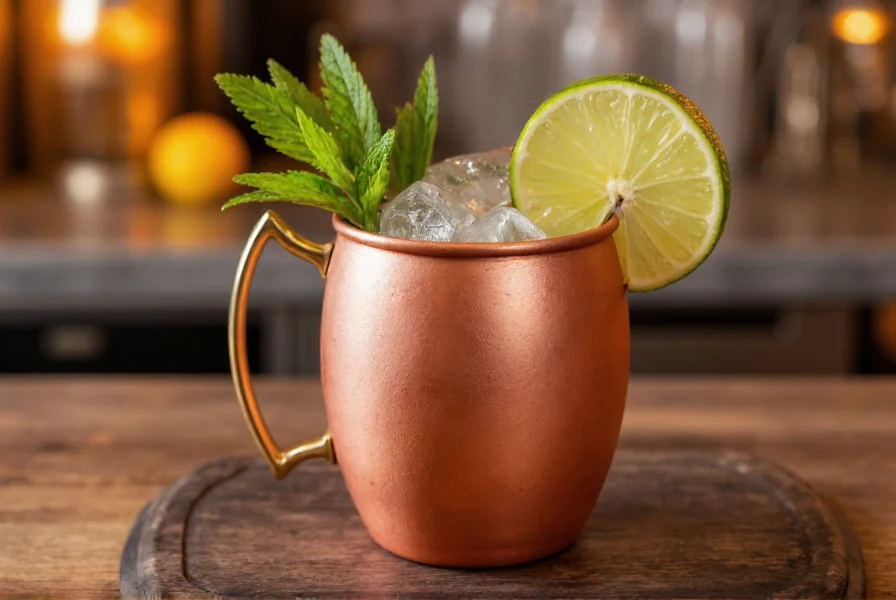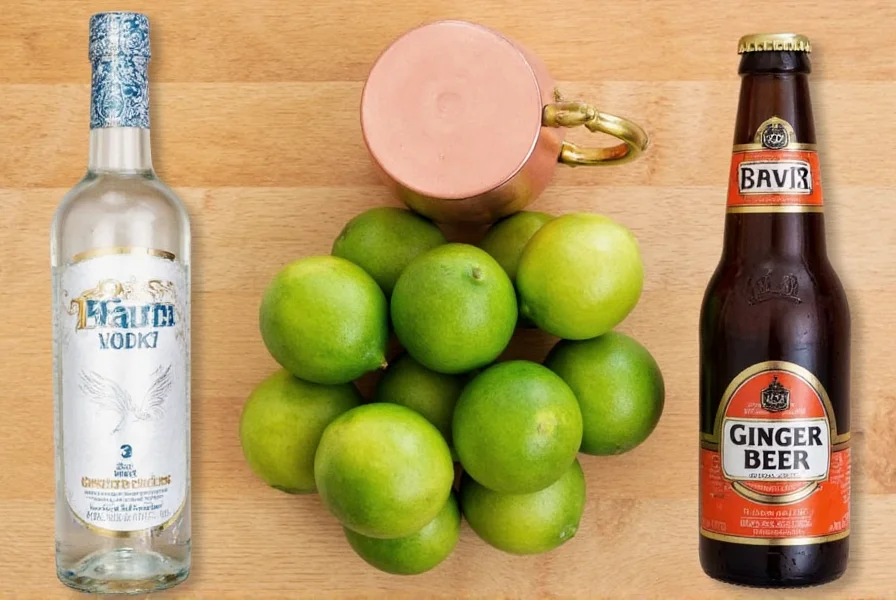When searching for a drink with vodka and ginger beer, you're almost certainly looking for the Moscow Mule—the iconic cocktail that popularized this perfect pairing. This simple yet sophisticated beverage has maintained its popularity for decades, becoming a staple in bars worldwide and a favorite for home mixologists.
The Origin Story of the Moscow Mule
The Moscow Mule wasn't born in Moscow or even Russia—it was actually created in the United States during the 1940s. The cocktail emerged from a perfect storm of business challenges. John G. Martin, owner of Smirnoff vodka (which was struggling to gain popularity in America), connected with Jack Morgan, owner of the Cock 'n' Bull restaurant in Hollywood, who had excess ginger beer. Meanwhile, Morgan's friend Wes Price had a surplus of copper mugs. Together, they combined these elements to create the Moscow Mule, cleverly named to reference vodka's Russian heritage.

Perfecting the Classic Moscow Mule Recipe
While variations exist, the traditional Moscow Mule maintains a simple formula that balances the spicy kick of ginger beer with the clean taste of vodka and the bright acidity of lime. Here's the authentic preparation method:
| Ingredient | Amount | Notes |
|---|---|---|
| Vodka | 2 ounces | Use quality vodka for best results |
| Fresh lime juice | 1/2 ounce | Bottled juice won't provide the same brightness |
| Ginger beer | 4-6 ounces | Premium brands with real ginger work best |
Step-by-Step Preparation
- Chill a copper mug in the freezer for at least 15 minutes
- Add vodka and fresh lime juice to the mug
- Fill with ice (preferably large cubes that melt slower)
- Pour ginger beer over the ice
- Gently stir to combine without losing carbonation
- Garnish with a lime wedge
Why Copper Mugs Matter for Moscow Mules
The traditional copper mug isn't just for show—it serves important functional purposes. Copper's excellent thermal conductivity keeps the drink colder longer than glassware. The metal also subtly interacts with the cocktail's ingredients, enhancing the ginger's spiciness while softening the vodka's harshness. While you can make a Moscow Mule in any glass, the copper mug remains integral to the authentic experience.

Choosing the Right Ginger Beer
Not all ginger beers work equally well in a Moscow Mule. The best options feature:
- Real ginger root as a primary ingredient
- Noticeable spicy kick without overwhelming sweetness
- Strong carbonation that holds up when poured over ice
- No artificial flavors or colors
Brands like Fever-Tree, Q Mixers, and Bundaberg generally provide the authentic ginger spice needed for a proper Moscow Mule, while many mainstream ginger beers tend to be too sweet and lack sufficient ginger heat.
Popular Moscow Mule Variations to Try
Once you've mastered the classic recipe, these creative twists offer exciting alternatives:
- Dark and Stormy Mule: Replace half the vodka with dark rum for a richer flavor profile
- Cucumber Mule: Add 4-5 slices of fresh cucumber and muddle before adding other ingredients
- Grapefruit Mule: Substitute lime juice with fresh grapefruit juice for a tangier drink
- Spicy Mule: Add a thin slice of jalapeño or a dash of chili tincture for extra heat
- Maple Mule: Replace lime juice with 1/4 ounce of maple syrup for a fall-inspired version
When to Enjoy a Moscow Mule
The Moscow Mule's refreshing qualities make it versatile across seasons and occasions. Its bright, spicy profile works particularly well:
- As a summer cooler on hot days
- As an aperitif before meals to stimulate the appetite
- During brunch as a less-sweet alternative to mimosas
- At holiday gatherings as a sophisticated cocktail option
- When you want a lower-alcohol drink (compared to spirit-forward cocktails)
Common Mistakes to Avoid When Making Moscow Mules
Even simple cocktails can go wrong if you overlook key details. Steer clear of these common Moscow Mule pitfalls:
- Using ginger ale instead of ginger beer (they're not interchangeable)
- Serving in a warm mug (always chill your copper mug first)
- Using bottled lime juice (fresh is essential for proper balance)
- Over-stirring (this releases too much carbonation)
- Using low-quality vodka (you'll taste the difference)










 浙公网安备
33010002000092号
浙公网安备
33010002000092号 浙B2-20120091-4
浙B2-20120091-4